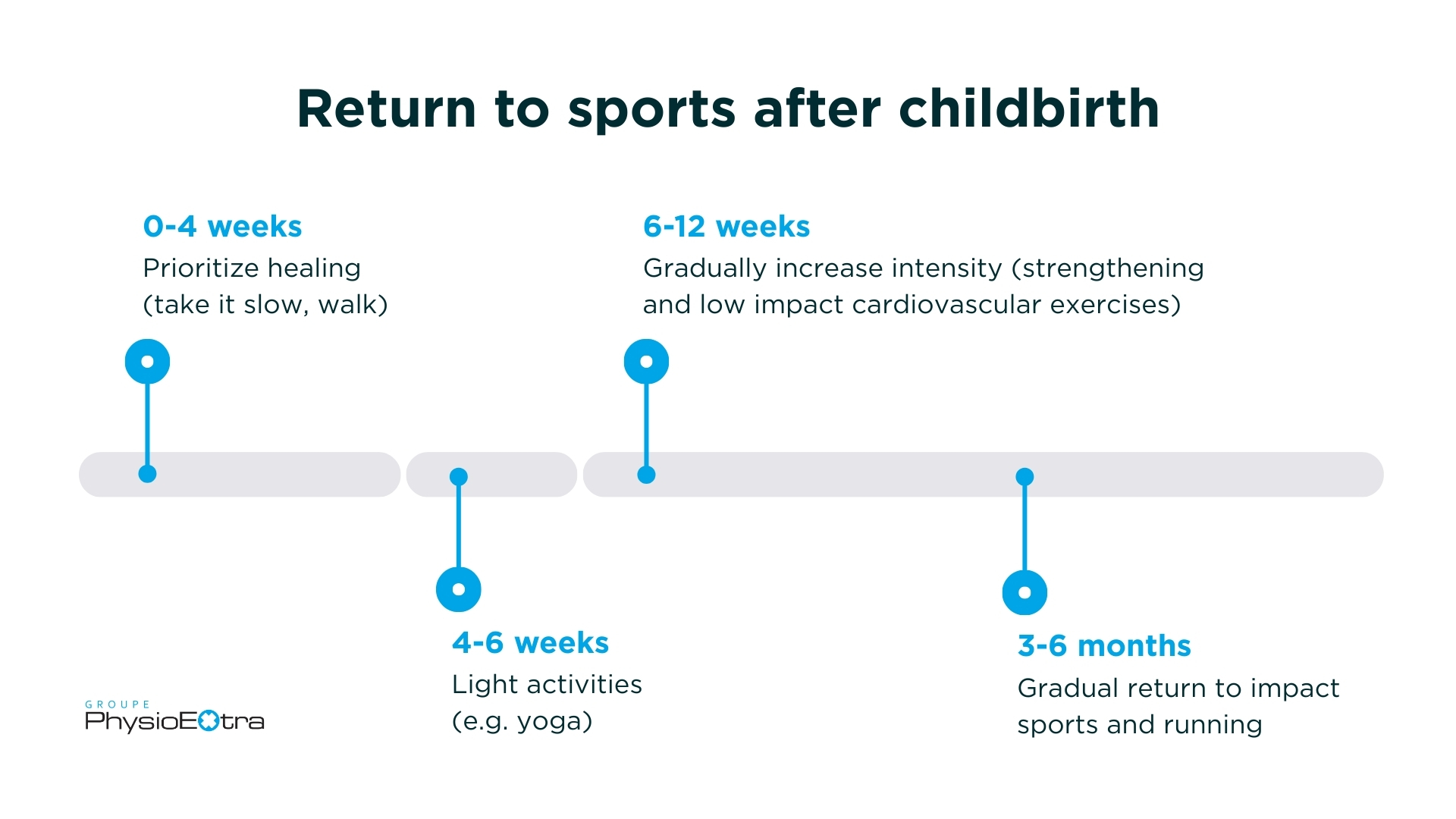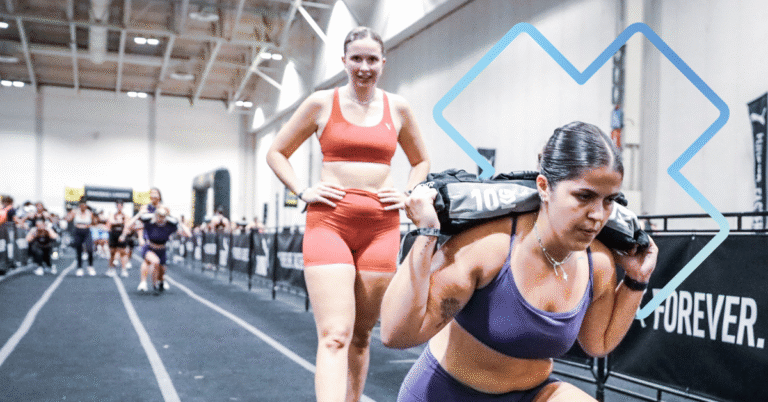The first weeks: prioritize healing
In the days following childbirth, the priority is recovery. The body needs to heal, whether after a vaginal delivery or a cesarean section. Instead of thinking about training, focus on simple movements that promote breathing and blood circulation, such as diaphragmatic breathing exercises. These gentle actions help reduce swelling, stimulate healing, and gradually activate your deep muscles.
During the first two weeks, daily activities should resume slowly, respecting your sensations. The goal isn’t to “train” yet, but to gently get the body moving again at its own pace. Walking can usually be resumed gradually around two weeks postpartum. Start with short distances to limit pain, discomfort, and postpartum bleeding.
A balanced, fiber-rich diet and good hydration help prevent constipation, along with breathing exercises and gentle walking. Constipation can worsen pelvic issues such as urinary leaks, perineal pain, and a sensation of vaginal heaviness.

Between 4 and 6 weeks: a gentle return
After your postnatal checkup with your doctor or midwife, you can gradually reintroduce light physical activities. At this stage, the goal is to regain comfortable mobility and help your body get used to effort again without putting pressure on the pelvic floor. Gentle daily walking, swimming, yoga, or postnatal Pilates are excellent options.
These activities improve circulation, flexibility, and even sleep quality—a key factor in postnatal recovery. For breastfeeding mothers, it’s best to schedule workouts after feeding and wear a properly fitted sports bra to avoid discomfort.
Between 6 and 12 weeks: gradually increase intensity
Around 6 to 8 weeks postpartum, it’s recommended to consult a pelvic floor physiotherapist to assess the state of your pelvic floor and abdominal muscles before resuming more intense physical activity. After childbirth, daily pelvic floor exercises are encouraged to reduce the risk of pelvic issues.
If there are no pelvic symptoms such as lower back or pelvic pain, urinary leakage, or a feeling of heaviness, you can progressively increase activity intensity. Adapted strengthening exercises or stroller cardio sessions are great examples. Many postnatal group classes and online programs are now available to help the body recover gradually and safely.
For women without medical restrictions, it’s recommended to engage in 120 minutes of moderate to vigorous physical activity per week, spread over at least four days. Reaching this goal can be challenging during the postpartum period, but working toward it can greatly benefit both physical and mental health.
High-impact sports and running: wait 3 to 6 months
More demanding sports like running, horseback riding, breaststroke swimming, or jump-based workouts require full muscle and ligament recovery. It’s generally advised to wait between three and six months before resuming them.
When restarting, begin with an interval program alternating walking and running, keeping your stride light and soft. A slightly higher cadence (around 170–180 steps per minute) and proper footwear can help reduce impact.
Before restarting, make sure that:
- your pelvic floor is strong, enduring, and well-coordinated;
- your breathing and posture are under control;
- no heaviness, leakage, pain, or bleeding occurs during exertion.
Consult our article: The impact of running on the perineum.
How to know you’re ready
Some simple tests can help determine if your body is ready for running or more intense sports. If you can perform these exercises without pain or discomfort, you can consider a gradual return:
- Walk for 30 minutes straight
- Run in place for 1 minute
- Balance on one leg for 10 seconds
- Do 10 single-leg squats on each side
- Perform 10 forward jumps
- Hop on one leg (each side)
- Do 10 “running man” exercises per side
If any of these exercises cause discomfort, continue strengthening before resuming running.
Risks of returning too quickly
Returning to sport too soon can have consequences, such as:
- Prolapse (organ descent), causing a feeling of heaviness or vaginal pressure
- Urinary leakage, especially during exertion
- Diastasis recti (abdominal separation), which affects trunk stability and makes daily activities like lifting your baby more difficult
A gradual progression is the best way to protect your body and ensure a sustainable recovery.
Conclusion
Every woman experiences postpartum recovery differently—there’s no universal recipe for returning to sports. What matters most is listening to your body, respecting your pace, and seeking guidance from qualified professionals.
At PhysioExtra, our physiotherapists expert in pelvic and perineal rehabilitation (PPR) can support your recovery, assess your pelvic floor, and design a program tailored to your goals. Don’t hesitate to book an appointment today to safely return to your favorite activities.






